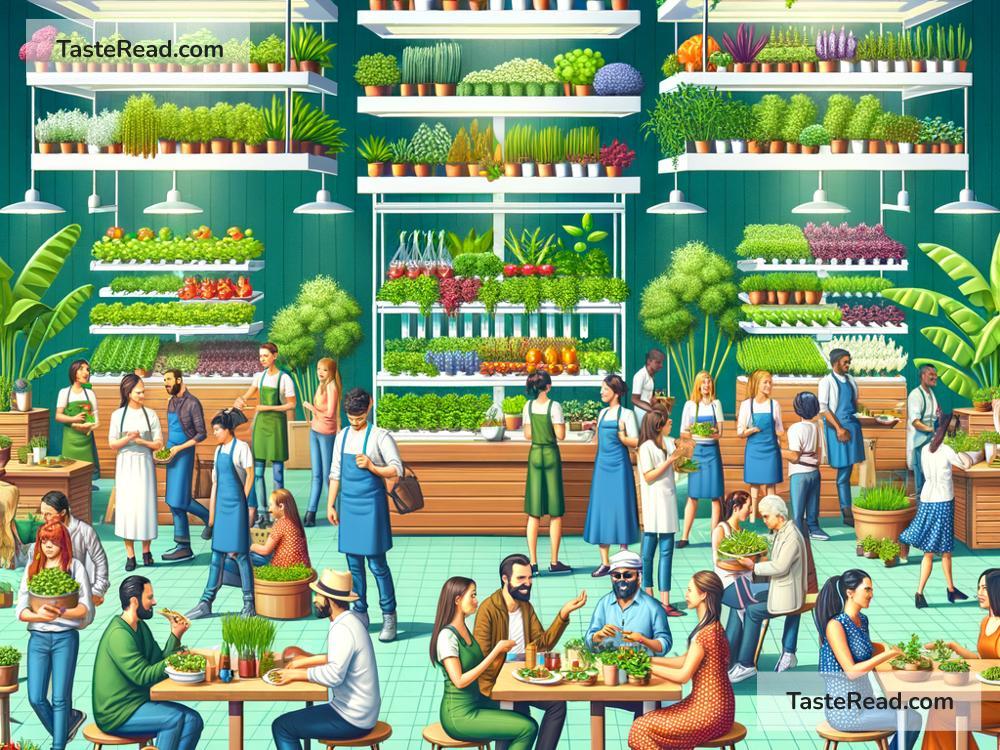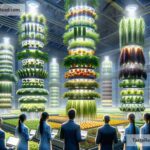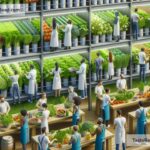The Future of Food and Collaborative Community Models
Food is essential for everyone, but the ways we grow, share, and consume food are rapidly changing. As our planet faces challenges like climate change, population growth, and resource shortages, people are thinking more creatively about how we can create a better food system. One solution gaining popularity is collaborative community models. These new approaches rely on people coming together to share resources, knowledge, and effort to ensure everyone has access to healthy and sustainable food. Let’s explore what the future of food might look like and how communities can play a big role.
Challenges with the Current Food System
Today, the global food system faces many problems. Farming is heavily dependent on water, land, and chemicals that can harm the environment. Industrial food production emits large amounts of greenhouse gases, contributing to climate change. In many parts of the world, food waste is also a big issue—tons of edible food end up in landfills every year. At the same time, millions of people don’t have enough to eat or struggle to access nutritious meals.
As the world’s population grows, these challenges will only get bigger. By 2050, there will be nearly 10 billion people, and we’ll need to produce about 70% more food than we do now to feed everyone. But producing more food isn’t the only solution. Instead, we need smarter systems that prioritize sustainability, fairness, and community.
The Future of Food: Innovation and Sustainability
The future of food will likely look very different from what we have today. Scientists, farmers, and technology companies are already working on exciting innovations to address food challenges. Here are a few possibilities:
1. Alternative Protein Sources
One trend gaining traction is finding alternatives to traditional meat and dairy. Producing beef, for example, requires a lot of land, water, and energy. Lab-grown meat, plant-based proteins, and insect-based foods could become more common as we look for environmentally friendly ways to meet protein needs.
2. Vertical Farming
Imagine farms stacked inside buildings instead of spreading across large fields. Vertical farming uses less space and can be done in cities, closer to where people live. These farms grow crops indoors using advanced techniques like hydroponics (growing plants in water instead of soil) and LED lights. Vertical farming saves water and doesn’t depend on weather, making it a reliable option for the future.
3. Regenerative Agriculture
Farming doesn’t have to harm the earth—it can heal it. Regenerative agriculture focuses on practices that improve soil health, increase biodiversity, and store carbon in the ground. This type of farming helps fight climate change and makes the land healthier for future crops.
4. Smart Food Distribution
Technology can make food distribution more efficient. Apps, artificial intelligence, and blockchain technology can help reduce food waste by better matching supply with demand. Imagine fewer trucks driving back and forth needlessly or excess food being routed quickly to areas where people are hungry.
These innovations are exciting, but they won’t work well unless communities also play a role in making the food system fairer and stronger.
Collaborative Community Models: Sharing and Growing Together
The idea behind collaborative community models is simple: we’re stronger together. By working as a group, people can pool resources, share knowledge, and tackle local problems. These models can include farmers, local governments, nonprofits, and neighbors all working toward a common goal: feeding everyone in a sustainable and fair way.
1. Community-Supported Agriculture (CSA)
CSA programs let people support local farmers by buying a “share” of their crops. Members pay upfront for a season’s worth of produce and receive regular deliveries of fresh fruits, vegetables, and other farm products. This helps farmers earn stable incomes and makes healthy food more affordable for families.
2. Food Co-Ops
Food cooperatives, or co-ops, are stores owned and managed by the community. Members of a co-op can vote on decisions, such as what products to stock and pricing. Many co-ops focus on selling locally sourced, organic, or fair-trade foods. Because there’s no corporate owner taking profits, food can be sold at fair prices.
3. Urban Community Gardens
Cities are full of unused spaces—vacant lots, rooftops, or tiny patches of land. Community gardens turn these spaces into places where neighbors can grow fruits, vegetables, and herbs. Beyond providing food, these gardens build connections between people and teach valuable skills like gardening and cooking.
4. Food Sharing Networks
Around the world, groups are setting up networks where people can share surplus food instead of letting it go to waste. For example, a bakery might donate extra bread to a local pantry, or families might share excess produce from their home gardens. Apps and online platforms make it easier to track and organize this sharing.
5. Repair Cafes and Cooking Workshops
Collaborative models often go beyond growing food—they also teach people how to make the most of it. Repair cafés help people fix kitchen appliances instead of throwing them away, while cooking workshops show families how to prepare budget-friendly meals with simple ingredients.
Why Collaborative Food Models Matter
Community models aren’t just about food—they’re about people. When communities work together to produce and share food, they create stronger bonds and a greater sense of trust. These models can also reduce inequality by ensuring that everyone has access to nutritious options, regardless of income.
The future of food isn’t just about technology or big companies—it’s about collaboration. We don’t have to wait for governments or corporations to solve food problems. Everyday people, working together, have the power to create change. Whether it’s growing vegetables in a shared garden, supporting local farmers, or donating leftovers to those in need, everyone can play a part.
Looking Ahead
The future of food will depend on balance: balancing innovation with tradition, global systems with local action, and individual needs with community well-being. By embracing collaborative models, we can help create a food system that feeds everyone while protecting the planet for future generations. The changes won’t happen overnight, but with creativity and teamwork, we can shape a better and tastier future.


